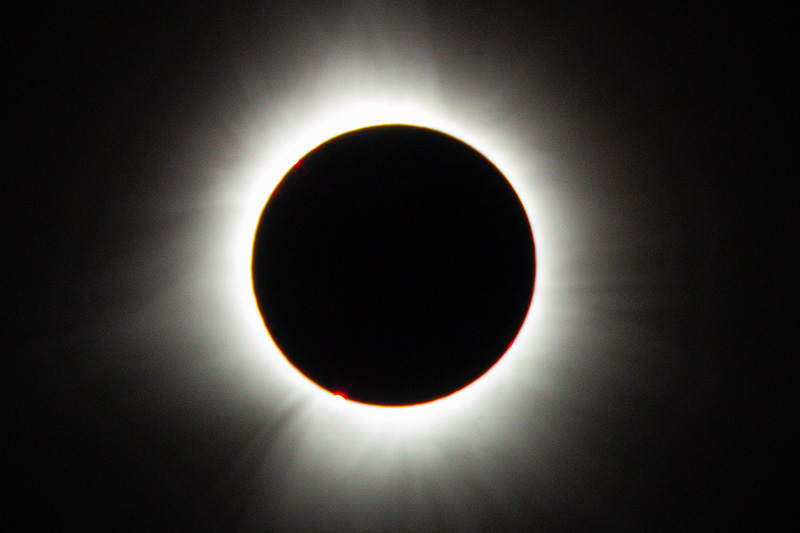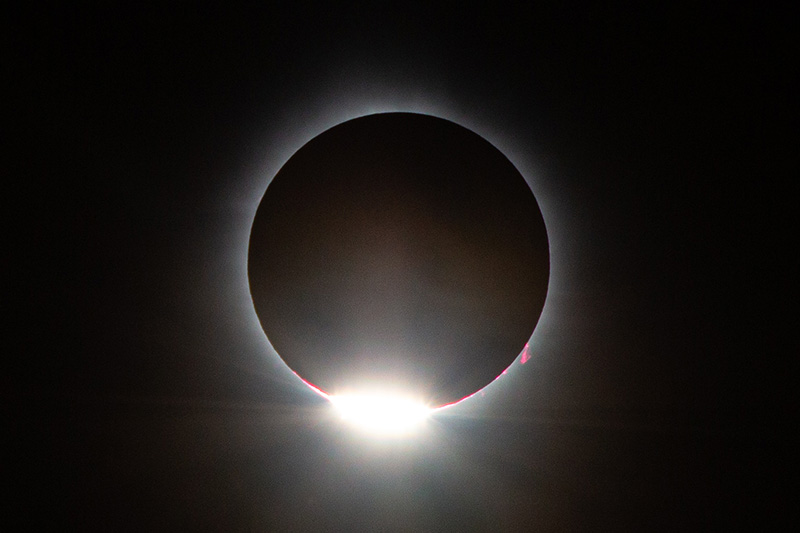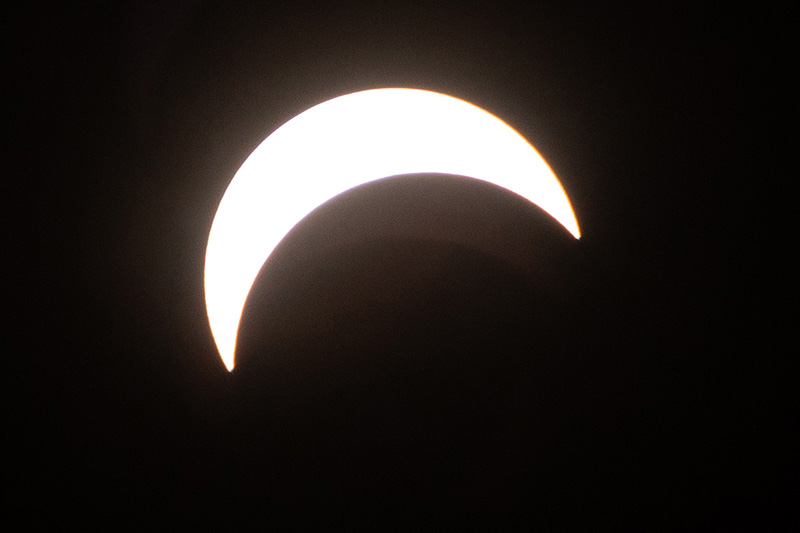- Apply
- Visit
- Request Info
- Give
Astronomer explains 'awesome cosmic alignments'
Written by Zoran Pazameta
Published on April 12, 2024
Few astronomical phenomena are visible to the human eye, so when the two brightest objects in our sky align to produce an eclipse (and the weather cooperates), the performance amazes viewers today as it has since the beginning of time.
The two possible types of eclipses (solar and lunar) need three bodies — the Sun, Earth and Moon — to line up perfectly in space, both vertically and horizontally. This doesn’t happen often because the Moon’s orbit is tilted in space, so most of the time it’s too high or too low from the Earth-Sun line.

But when the alignment is just right, the Moon can pass behind the Earth through Earth’s shadow; this is a lunar eclipse. You don’t have to be anywhere special on Earth to see one of these; you just have to be on the night side.
The Moon can also pass between the Earth and the Sun, blocking our view of the Sun’s disk and casting a shadow on the Earth. This shadow is small and travels on the ground as Earth rotates and the Moon orbits, so you have to be in the right place at the right time to see this “total solar eclipse” — and totality only lasts a few minutes. Anywhere away from the shadow, you will see the Sun only partially covered by the Moon’s disk, as we just did (on campus) on April 8.
If the Moon is at the far end of its elliptical orbit, it will look smaller than usual in the sky and will not cover the Sun’s disk during an eclipse. Instead, there will be a ring of sunlight left around the Moon’s disk. Such an “annular eclipse” was the last solar eclipse we saw from Eastern — back in May of 1994. And before that, there was a spectacular total eclipse visible from here in 1970.
To ancient peoples, the (tiny, but close) Moon appearing to be the same size in the sky as the (immense, but distant) Sun was not a coincidence; it was divinely arranged, and so had deep spiritual and religious significance. We now know that the Moon was formed much closer to Earth than it is today, and has been spiraling away from us ever since. (The rate today is about an inch-and-a-half per year.) In the future, the Moon will be so far away that it will look smaller and smaller compared to the Sun’s disk. We will never again see a total eclipse; they will all be annular.
How fortunate we are to be alive at just this point in the evolution of the Earth-Moon system!





